Description
This 1931 film masterpiece, unlike the countless films that have followed over the decades, is a true adaptation of Robert Louis Stevenson’s novel. With innovative camera angles and an eerie musical score, Rouben Mamoulian’s production of this timeless story tells in stark form one man’s battle with his two natures leading to inevitable tragedy.
Fredric March gives an astonishing performance as Dr. Jekyll and Mr. Hyde (March was also Oscar-nominated for his performance). In many ways this is one of his best and most intense roles. March’s pained, on-edge performance is near perfect. Miriam Hopkins is also very good as the ill-fated woman he loves and hates at the same time. Rose Hobart plays her husband, the respectable butler in Jekyll’s life and yet a man whose loyalty to Jekyll he cannot understand and resents. Closeted in a tiny part, Rose Hobart gives one of her most memorable performances.
The film’s iconic opening sequence is a masterpiece of cinema, and the first time that Jekyll’s face and the future Hyde face is seen simultaneously. This shocking image sets up the film’s central conflict. Rose Hobart and Miriam Hopkins are seen as two sides of one person as both are beautifully shown here to be in many ways very different characters but also part of the same person. This scene represents togetherness, a common theme in this film. The same images can be seen as a mirror, reflecting the duality in Dr. Jekyll.
The score by Franz Waxman is very effective in setting the tone of the film to reflect its themes. The title song, “Dr. Jekyll and Mr. Hyde”, written by W. Haring, is performed by Marlene Dietrich in a very haunting performance that fits well into the film’s overall motifs of duality and sense of being separated from each other which are recurrent throughout the film.


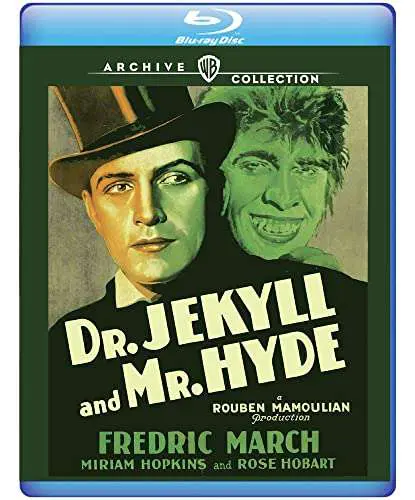
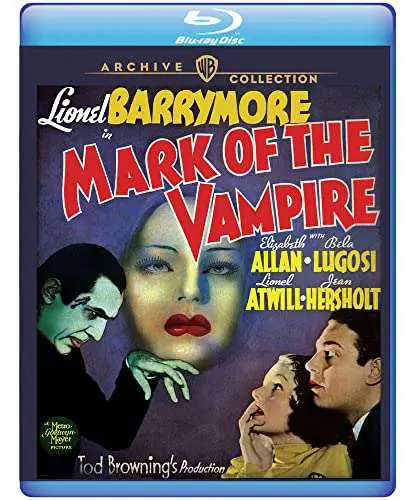
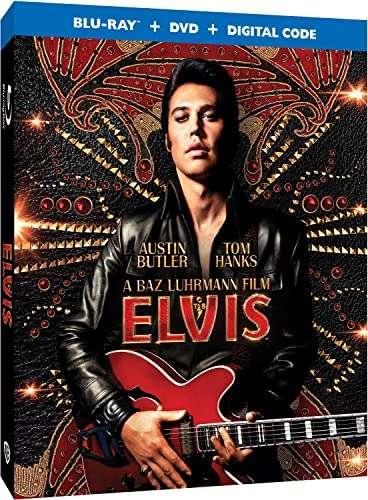
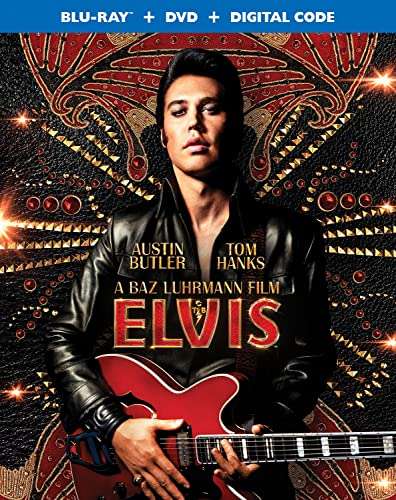
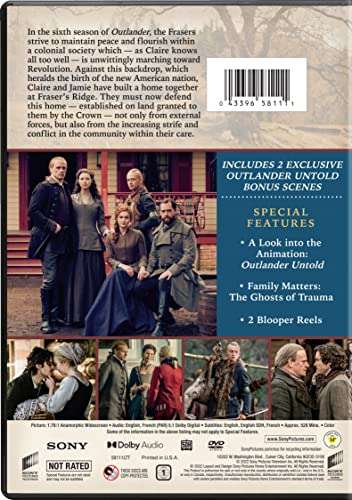
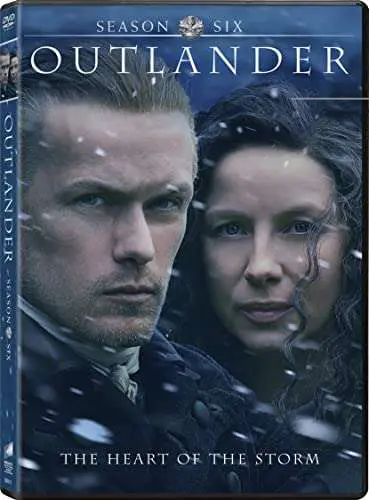

Charles P. –
Both movie versions are great in their own way. A great dvd for anyone who likes classic horror flicks. In the Fredric March version Hyde is an animalistic brute. In the Spencer Tracey version Hydes outer appearance is more subtle but the sadistic nature of the fiend is just as apparent.
RUMBURAK –
Der Schriftsteller Robert Louis Stevenson schuf mit der viktorianischen Schauergeschichte Dr.Jekyll und Mr. Hyde eines der nachhaltigsten Werke der Literaturgeschichte. In unzähligen Verfilmungen, Romanen taucht dieser Grundgedanke, der Teilung des Menschen in sein gutes und sein böses Ich wieder auf.Die Verfilmungen dieser immer wieder gern genommenen Grundstory geht in die hunderte. Unzählige habe ich sicherlich selbst gesichtet, und es bleibt doch die Erkenntnis das eine einzige Verfilmung den vorherigen und auch folgenden in ihrer Kraft, Klarheit und Dramatik weit überlegen ist.Robert Mamoulians Version aus dem Jahre 1932 ist von der Dramaturgie, den Schauspielern und den überragenden Kamera- und Trickaufnahmen bis heute unerreicht und stellt auch heutige Interpretationen leicht mit ihrer Dichte, Schauerlichkeit und der grossen theatralischen Tragik in den Schatten. Das erste, was bei dieser Verfilmung ins Auge sticht, ist das Mamoulian nicht, wie es der Novelle eigen ist, die Geschichte in Rückblenden, und mit verschachtelten Tagebuchaufzeichnungen erzählt sondern einen klaren, geradlinigen Erzählaufbau hat. Zudem unterfüttert er die doch zugegeben etwas trocken anmutende Erzählung mit packenden, intensiven Einzelszenen, baut zum Beispiel den furchtbaren Gewissenskampf, die Bösartigkeit Hydes und letztendlich auch den Verlust der grossen Liebe Jekylls, Miriam noch weiter aus, so das wir es hier schon von der Düsternis mit einer ausweglosen griechischen Tragödie zu tun haben. Horror, Tragik, Ausweglosigkeit vermittelt diese Verfilmung, ohne das sie etwas über die Jahre von ihrer Spannung verloren hätte.Frederic March ist die Idealbesetzung des feingeistigen, aber doch von einer verhängnisvollen Idee besessenen, sinisteren, hoch geschätzten Dr. Jekyll. Seine Mimik, seine unbewegt aristokratischen Gesichtszüge sind von der Physiognomie her sehr dem Stummfilm noch verpflichtet.” Wie viel freier und von schlechten Eigenschaften unbelastet, könnte das Gute im Menschen wirken, und wie viel hemmungsloser ohne Gewissenqual das Böse sein”.Und so beginnt Jekyll sein verhängnisvolles Experiment, die zwei Seelen in der Brust des Menschen, das Böse und das Gute per wissenschaftlichen Eingriff trennen zu wollen. Mit Hilfe einer Tinktur verwandelt er sich in einer finsteren Nacht in den grauenvollen Wüstling Mr.Hyde.Doch einmal den Dämon zum Leben erweckt, lässt er sich nicht mehr so einfach bezähmen.Sehr bald schon verwandelt sich Jekyll aus dem Nichts heraus ohne zu Hilfe name von Substanzen in seine verhasste, eigene verdrängte Seite. Zwar gelingt es ihm das absolut Böse seiner Seele mit der erschaffenen Person Hyde zu isolieren.Doch ist das Böse einmal freigesetzt wie ein Krebsgeschwür, das mehr und mehr die eigentliche Person Dr.Jekyll besetzt und auffrisst. Hyde ist nur animalisch böse. Doch Jekyll selbst, trägt natürlich immer noch beide Seiten, sich selbst und Hyde in sich. So zerbricht er,im Angesicht der Taten, die er als Mr.Hyde verübte, und am Ende steht nur die Vernichtung beider Individuen als einzige Erlösung.Beängstigend und an einen Süchtigen erinnernt, der von seinen eigenen erschaffenen Dämonen nicht mehr loskommt, sehen wir hier Dr. Jekyll auf dem Weg zu seiner Verlobten und sich von einer Sekunde zur anderen aus heiterem Himmel urplötzlich zusammenkrümmend. “Großer Gott hilf mir..!”. Ohne sein Zutun verwandelt er sich in superber, verstörender Weise in dieses bucklige, affenartige, groteske Geschöpf. Dies ist in dieser Verfilmung so unheimlich und verstörend gemacht im Kontext der grossen Tragik, das es auch heute noch Horror pur darstellt.Ein Horror auch seine grausigen Nachstellungen des Strassenmädchens und vor allem die geniale Maskenarbeit die Hyde bei jeder Verwandlung noch tierischer, bestialischer erscheinen lässt. Die Verführung der wissenschaftlichen Möglichkeiten Gott spielen zu wollen führt auch wie bei einem ähnlichen Roman, Mary Shelleys “Frankenstein” letztendlich nur zur totalen Zerstörung der Liebe, des Glücks und zur eigenen Auslöschung.Frederic March spielt beide Rollen, den kühlen, vornehmem später von Verzweiflung gequälten Jekyll, wie auch den abgrundtief moralisch verkommenen, tierisch, wilden Mr.Hyde mit grösster Bravour. Ebenfalls besticht der Film durch eine sagenhafte, revolutionäre Kameraarbeit. Zu den Klängen von Bachs Toccata beginnt das dämonische Werk. Wir sehen durch die Augen Jekylls wie seine feingliedrigen Hände über die Orgel gleiten, er steht auf, nimmt seinen Mantel. In einem Spiegel sehen wir zum ersten Mal sein Gesicht. Uns selbst. Wir Zuschauer sind Jekyll. In subjektiver, schwebender Kameraführung werden seine Augen, zu unseren Augen und mit gleitenden Einstellungen sind wir es selbst die die Droschke, später den Vorlesungssaal betreten. Eine absolut neuartige Technik der Zuschauermanipulation seiner Zeit.Fazit: Die beste, spannendste und tiefenpsychologisch beeindruckendste Filmadaption ist diese Verfilmung von 1932.Ebenfalls auf dieser Edition befindet sich auch eine knapp 10 Jahre später entstandene Version dieses Stoffes und es ist für Cineasten ein Genuß diese beiden Verfilmungen zu vergleichen. Mein Herz schlägt natürlich für die 1932er Version, doch ist auch diese mit Spencer Tracy und Ingrid Bergmann nicht zu verachten. Im direkten Vergleich wirkt sie jedoch ein ganzes Stück mutloser und weniger beindruckend, verwässert.Die grossen im Gedächtnis bleibenden tragischen Szenen fehlen, und trotz ebenfalls sehr guter Schauspielleistung ist meiner Meinung nach der sowohl physisch, als auch in seinen Gesichtszügen grobere Spencer Tracy als distinguierter Dr.Jekyll etwas fehlbesetzt. Da bleibt Frederic March doch wesentlich besser, authentischer in Erinnerung. Auch der weitgehende Verzicht auf die physische Verwandlung in ein böses Wesen Hyde macht diese Verfilmung etwas schal. Diese gehört als Ausdruck auch der seelischen Verkrüppelung natürlich dazu.Dazu kommt das diese Verfilmung in punkto Dramatik etwas schleift, und die religiöse Überhöhung etwas aufgesetzt wirkt. Dafür hat diese Verfilmung eine überragende Ingrid Bergmann zu bieten, die konsequent gegen ihr Image nicht als Verlobte des Arztes, sondern als Freudenmädchen besetzt wurde. Aber auch in solchen heikleren Szenen ist der Film wesentlich zurückhaltender, wie auch in den ganzen Missetaten des finsteren Mr. Hydes.Lieber Interessent, entscheiden, vergleichen Sie selbst. Beide Filme sind ein Hochgenuss. Beide Filme herausragend in der Filmgeschichte. Von beiden gibt es eigentlich auch eine deutsche Synchronisation.Doch es ist fraglich ob diese noch einmal auf den Markt kommen wird. Beide Filme sind jedoch leicht zu verstehen und wer es ganz genau haben will,es ist eine englische Untertitelung zuschaltbar.Viel cineastisches Schaudern und Vergnügen
Eleanor Burns –
While the presentation leaves something to be desired, and the whole concept of a dual-sided DVD (necessarily sans any label or artwork) feels tacky, one can hardly go wrong with two classic films for the price of one and decent special features, including commentary. Does it reduce the value, however, that one film is a remake / reinterpretation of the other? On reflection and repeat viewing, I don’t think so, as what emerges are two fascinatingly different takes on the same material (the 1887 Sullivan stage version of the Robert Louis Stevenson novella), much like the 1931 and 1979 Dracula films (also both based on the same play), or the BBC version of Bram Stoker’s Dracula compared to the Francis Ford Coppola version.**Spoiler alerts**What thus follows is somewhat of a defence of the occasionally maligned 1941 film. While it cannot be denied that it steals some of its best camera-work, scenery designs, and blocking from the earlier film, it follows a markedly different and rather more haunting approach, in retrospect.None of this, however, should be taken to diminish Fredric March’s extraordinary performance as Hyde. Suitably enhanced by savage, simian makeup (although the use of camera filters to darken his skin has rather unfortunate implications …), his performance is electrifying, creating a character of such energy, impulse, and bestial mayhem as to command the attention, especially given the early-talkie staginess of the rest of the cast. In that respect the 1931 film strongly resembles its contemporary; Tod Browning’s Dracula, and as with Lugosi’s vampire, March’s Hyde emerges as a truly unforgettable monster, and a brilliant cipher for the return of the repressed in a politely uptight, moralistic society.Right off the bat, Spencer Tracy’s Hyde is far less grotesque, completely human, and even somewhat banal. The first transformation scene – a moment of intense drama and perverse release in the 1931 version (“Free at last!”) – is played for deliberate anticlimax in the 1941 version, as a rasping Hyde stumbles to the mirror, dusts it off, checks himself from various angles … only to be confused by how little he has physically changed. “Is *this* evil?” he asks himself, then laughs almost nervously. The implication is clear, and continuously alluded to throughout the film: far from being a monstrous alter-ego, Hyde is merely Jekyll with the veneer lifted. His lust and sadism are present even before the transformation (his flirtatiousness with Ivy, his readiness to experiment on a human patient) but cloaked with civilisation … at least somewhat. Ingrid Bergman’s brilliantly interpreted Ivy Pearson sees through Jekyll’s façade of respectability long before Hyde actually comes to the fore, not that her perspicacity can save her.Ms. Bergman may be the strongest player in this. While all characters are better-nuanced than in the earlier version, Bergman does a superb job in turning the somewhat saccharine damsel in distress of the 1931 film into a strong, intelligent, charismatic, worldly-wise figure … making it all the more heartbreaking as her rape and systematic abuse at the hands of an all-too-human Hyde wears her down into a broken, suicidal, Stockholm Syndrome-ravaged shadow of her former self. Even in her dying scene, though, her terrifying insight – of how fine the line between Jekyll and Hyde actually is – is played for chilling effect. In both of the previous Hollywood versions (1931, and the John Barrymore silent of 1920) the sheer grotesqueness of Hyde had seemed almost a mitigation for Jekyll – how could one really hold the handsome, altruistic doctor responsible for the actions of this hideous alter-ego he had foolishly set free? In the 1941 version, however, Jekyll’s responsibility is writ large, and underscored by his resemblance to Hyde (the latter, even at his most advanced, merely looking like a seedier, more debauched version of him, like Dorian Gray’s picture come to life). His last, spontaneous transformation, at the very moment Jekyll refuses repentance and attempts to feign innocence for his crimes (by then including repeated, aggravated rape; coercive control; and two murders), sets the moral in stone, and one wonders if the drug actually did anything at all, or if it was merely a placebo (or an excuse) to let him indulge his dark side.All of which, though the plot itself is markedly different, is true to the spirit of the original novella, in which there was nothing overtly monstrous about Hyde (He is noted for looking repulsive, but no-one can define why, nor specify any actual deformity – the implication being it is purely an effect of his character) and Jekyll, notably, was by no means a spotless individual in the first place.The 1931 version is thus a gripping and visually striking melodrama, with one of the true classic monsters of the golden age of horror. The 1941 version is a chilling study of abuse, its emotional and mental consequences (brilliantly played by Bergman), and how society aids and abets it (Note the various lackeys Hyde bullies or bribes to manipulate Ivy’s destiny, and the total lack of compassion Jekyll’s butler shows her). The earlier film is a lot more fun, the second far more haunting. Both are well worth repeat viewings.
Amazon Customer –
Originally, I wanted the Spencer Tracy version which I had seen in my teenage years and loved, not only because of the beautiful Lana Turner, who was just absolutely gorgeous, but also because I am a prolific reader and love the classics. The DVD version I found on Amazon had two versions, the earlier one made in 1932, which I had not seen and was not really inclined to do so. But seeing as it was there I thought I may as well see it. Well! It was just spectacular! Frederick March and Miriam Hopkins are fantastic and the special feature commentary by Greg Mank adds many interesting. behind the scenes trivia that make this version even more surprising and special. By comparison the 1941 version lacks the power and monstrosity of the 1932 version and it almost felt as if it had been sanitised somewhat. Both Tracy and Bergman appeared to diminish in stature, especially if you watch this one directly after the first one.My only cause for complaint is that I do not like it when they have a side A and a side B on the one disk. I would have preferred the movies to be on two discs.The DVDs arrived in the time frame stated and in good condition.Both versions are in black and white and I really like that. This copy is in great condition
Blackadder –
The two versions, one starring Fredric March (1932), the other with Spencer Tracey (1941) could not be more different. One of the reasons is that the thirties March version came out just before the Hays Act that cut down what could be seen. The Tracey version reflects this, showing a very plastic Hollywood-type version. Spencer Tracey is just….. Spencer Tracey and does not really attempt to act.Miriam Hopkins does an excellent performance as Ivy Pearson, who gives a very sexual performance, especially when Jekyll first treats her. It’s well known that a lot of the 1932 movie ended on the cutting room floor. How wonderful it would have been to have those included in the film as well. The film also shows a lot of film terchnique. It starts with the viewpoint from Jekyll’s eyes. There are also close-ups of the eyes, most noticable when Jekyll proposes to his love in the garden.The films are presented on one disc, one one each side. It is rather annoying that the DVD jacket is colourised, then the films themself are black and white. Any person not having the pleasure of seeing the film before will get a surprise when they see it.
Film-Freak –
Eigentlich kaufe ich selten DVDs,die keinen deutschen Untertitel haben.Doch da jeder den Inhalt des verrückten Dr.Jekylls kennt,kann man hier auch getrost auf deutsche Untertitel verzichten und sich beim Fernsehen zurücklehnen.Leider muss ich gestehen,dass es mir auf die erste Filmversion von 1932 mit Fredric March garnicht so ankam, wobei diese auch sehr toll gemacht ist und er mit Recht den Oscar erhielt.In erster Linie ging es mir um die Version von 1941 mit Ingrid Bergman, Lana Turner und Spencer Tracy.Dies ist wohl auch eher die klassischere Buchverfilmung.Da ich die deutsche TV-Version von “Arzt und Dämon”kenne, war es für mich ein Muss die englische Fassung zu besitzen.Und bei solch einem günstigen Preis muss man nicht lange überlegen.Toll finde ich auch, dass Ingrid Bergman in diesem Film eine ganz andere Rolle,die des Barmädchens,spielt.Man kennt sie ja fast nur als die brave und hier ist sie eine Verführerin vom Feinsten,bei der selbst der gute Dr.Jekyll nicht wiederstehen kann, obwohl er eine ganz nette Verlobte zu Hause sitzen hat.Und diese Verlobte ist sicher in der Gesellschaft mehr angesehen als dieses Barmädchen.Man sieht,dass es nicht immer nur reicht “nett” zu sein.Danke an Ingrid Bergman und Lana Turner, dass ihr die Filmrollen getauscht habt und die Bergman danach viele verschiedene und tolle Rollen spielen durfte.Beide Filmversionen liegen für ihr jeweiliges Entstehungsjahr im guten Ton vor und ich bin verblüfft wie gut Bergmans Synchronstimme ihrer Orginalstimme ähnelt.Als Extras gibt es einen Audiokommentar zur 1932er Version,den Kino Trailer zur Version aus dem Jahr 1941 und den Looney-Tunes-Cartoon “Hyde and Hare”.
Elleppi –
The 2 best film adaptations of Stevenson novel on one dvd edition. A good idea to see how it changed from early spoken cinema (1931) to the following decade (1941). Personally, despite Tracy’s performance, I prefere the early one, with a great Frederich March, and probably more advanced, modern and darker than the following one.The first Jekyll is bold, provocative, extreme, with a savage and brutal description of his sexual hunger and loss of sexual and social inhibitions, and visually surprising (the long shot POV that leads to reveal his face in the mirror is incredible because it seems so contemporary).It is like it is still based on visual and editing and acting, relying on what was the real power of silent cinema, where the acting and the photography and direction had to rely only on themselves and be more effective and stunning to help the storytelling to get though to the audience. But it also takes advantage of sound to add values through music, actors’ voices and sound effects. The other one is a very good drama but already more mainstream.The video quality is very good
Keith Naylor –
(This review, and the 5 stars, are for the 1931 version. I hope to edit into this review my thoughts on the 1941 version at a later date)SO, what can be said about the 1931 Fredric March version – let me start by saying it is THE GREATEST HORROR MOVIE OF THE 30s (with Karloffs Frankenstein and Bride of Frankenstein coming second and third).Atmosphere, direction, sets, are all brilliant. The movie has a wealth of brilliant inventive effects – Jeyklls walk to the mirror in the opening scene, and his initial changes into Hyde, produced by coloured filters, to name but two.The acting is all it needs to be, but in particular I would say Miriam Hopkins excels in displaying her repulsion and fear of Hyde. The scene where she pleads to Jekyll saying she will do anything to be free of Hyde is very moving, as is Jekylls response.As for Fredric March’s performance – absolutely stunning. I had to look up which actor was playing Hyde, as I could not believe it was March. His two performances are impossibly dissimilar. Never was an acting Oscar so deservedly won!I do however have two minor criticisms – one being the use of ‘stop motion’ transformations later in the film. They needed to be carried out over a greater number of frames to make the changes ‘smoother’ or avoided altogether, and the other irritation was the name ‘Jeekal’. I much prefer the sound of ‘Jeckal’ as used in some other movies.Just one other point – this is another DVD package incorrectly rated as being suitable for 12 year olds, when clearly this classic movie should be rated 15. Why is this happening? KAN
Amazon Customer –
Absolutely amazed by the 1932 version of Jekyll and Hyde!
MyPenName –
I was pleased to find these two versions of Dr. Jekyll and Mr. Hyde (1932 F. March etal. and 1941 S. Tracy etal.) available together. The image and sound quality of both movies is exemplary. The extras, one cartoon plus a commentary feature, are on the 1932 side. The dual-sided DVD comes in a respectable-quality snap case. I paid < $12 including shipping to the USA, bought new from a UK vendor.